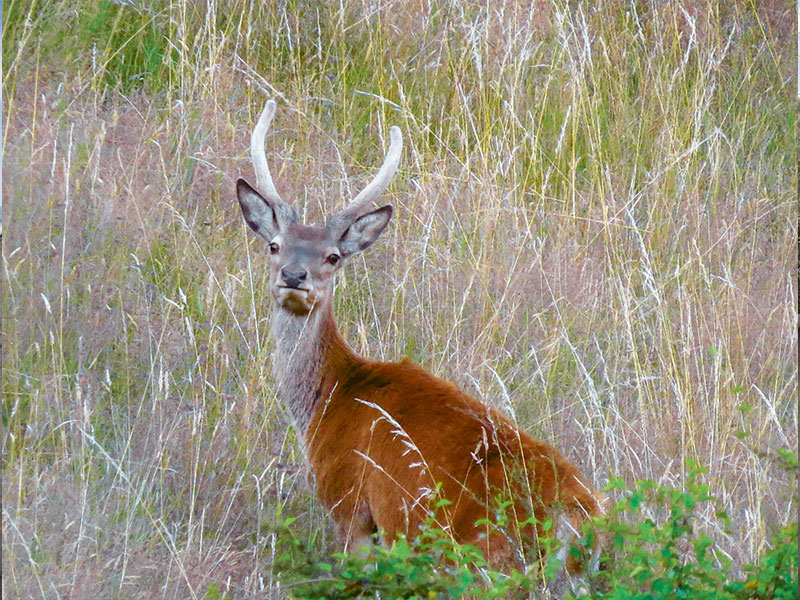Hunting basics: understanding deer senses
4 min read
Hunting has to adapt to respect a deer’s senses. Photo: Tony Orman
Animals, and in particular deer, have acute senses. Whether it’s a snap of a twig or an unknown scent in the air, a deer can be startled easily if it spots something that’s out of place in the woods.
Deer are smart and wary. Let’s take a look at their eyesight, for example. Overall, it’s far better than humans, but it has a couple of shortcomings. Deer, for instance, are not good at identifying stationary objects. Indeed, one authority said that “beyond 20 metres, it (a deer) cannot distinguish a stationary man from a lamp post”.
Deer are also almost but not quite colour blind, but they can see far better than us in half-light or near darkness. Plus, let anything move and the deer instantly homes in on it with intense focus. The deer is quick to detect movement and can distinguish human movement from insignificant background activity, such as blowing leaves or foliage.
So, what’s the message for the hunter in this? Simply minimise your movement. Spend more time sitting still and do much more looking.
Next up is the deer’s nose. There was a classic book by Fraser Darling A Herd of Red Deer based in Scotland. The author emphasised how acute the deer’s sense of smell is. He wrote: “This is by far the most meaningful sense in the lives of the red deer. Their reliance on the information it conveys is absolute. When, for example, deer smell man, they do not wait for confirmation of the fact by the exercise of other senses, they move away.”
It is said that “the deer’s sense of smell is roughly a million times keener than ours.”
One autumn afternoon I was carefully hunting along the grass edges of a forest. The breeze was quartering from behind me. I moved slowly, and as I eased up a rise and looked along to a grassy glade among the beech trees, I spotted a deer, just 40 metres away, head down feeding. I steadied the rifle against a tree and in the same instant, felt the gentle breeze veer and come in directly behind me.
The reaction was instantaneous. As the first whiff of human scent reached the deer, its head came up. To my astonishment, it was a stag, young in body and with already a splendid set of antlers.
Two things happened in a flash: one, the deer at the first scent of man wheeled and raced off, and secondly, at that same moment, I had already decided he should be left to serve hinds over future autumns. I left impressed with the stag’s swift reaction to the message the breeze had carried.
Hunting has to adapt to respect these senses. Naturally hunting into the wind, breeze, or air drift is a must. However, it must be acknowledged that sometimes, the wind swirls about in all directions, sometimes in the hunter’s face then next moment, coming in behind. On those days, the wind rather than the deer beats the hunter. Deer can pick up a scent almost a kilometre away.
Coming to a deer’s sense of hearing, it has been claimed that a deer can hear the ticking of a watch, the length of a cricket pitch away.
They also react to warning alarm bells in the wilds. Deer are intelligent and quickly associate certain events with danger. The sound or sight of paradise duck, Canada geese, a startled hare, or the warning cry of a cock quail will alert them and may make them at least uneasy or cause them to move into cover.
Overall, the moral is to hunt into the breeze, go quietly, and limit your movement.
A hunter I met many years ago in Hawke’s Bay used to just sit in a stand he had built up a tree, near an area of a small grassed flat beside the creek. Sometimes he took a book along.
Old Gil explained to me, “You know most hunters spend too much time moving about. Deer pick up movement in a flash. I take it easy and take plenty of spells, stopping often and just looking. You know I see more deer now than when I was young fella always hurrying.”
He told me of a recent morning in his tree stand.
Gil had been feeling a bit seedy, so he sat in his tree stand and while waiting, read a paperback western. After a couple of hours, a couple of hunters passed by but they never saw Gil above them. Half an hour later they came back as noisy as ever. Gil went back to his book.
About a quarter of an hour later, Gil saw a movement out of the corner of his eye. It was a plump young Jap spiker poking out for a drink.
“I pointed the rifle in the right direction and bowled it,” chuckled Gil.



